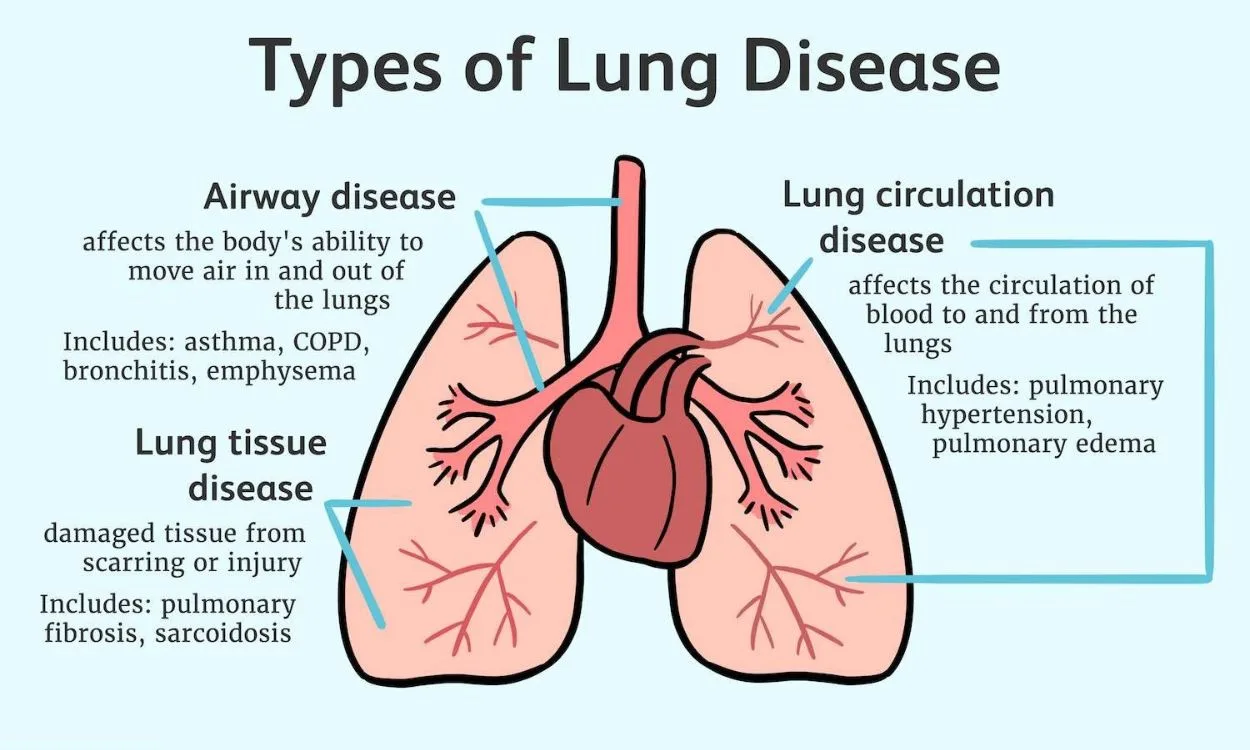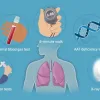What are the different types of lung diseases?
Introduction
The human respiratory system is a complex network of organs and tissues that work together to facilitate the exchange of oxygen and carbon dioxide in the body. However, various factors such as environmental pollutants, genetics, and lifestyle choices can contribute to the development of lung diseases. In this article, we will explore the different types of lung diseases that commonly affect the Indian population.
1. Asthma
- Asthma is a chronic inflammatory disorder of the airways that causes recurring episodes of wheezing, breathlessness, chest tightness, and coughing.
- It can be triggered by various factors such as allergens, respiratory infections, exercise, and exposure to irritants like smoke or air pollution.
- Asthma can be managed with medications to control inflammation and bronchodilators to relieve symptoms.
2. Chronic Obstructive Pulmonary Disease (COPD)
- COPD is a progressive lung disease that obstructs airflow and makes it difficult to breathe.
- The two main conditions that fall under COPD are chronic bronchitis and emphysema.
- Chronic bronchitis involves long-term inflammation of the airways, leading to increased mucus production and coughing.
- Emphysema involves the gradual destruction of lung tissue, reducing the elasticity of the lungs and impairing their ability to exchange gases.
- COPD is primarily caused by smoking, but long-term exposure to air pollution and occupational dust and chemicals can also contribute to its development.
- Treatment for COPD focuses on symptom management, including the use of bronchodilators, inhaled corticosteroids, and pulmonary rehabilitation.
3. Tuberculosis (TB)
- Tuberculosis is an infectious disease caused by the bacterium Mycobacterium tuberculosis.
- It primarily affects the lungs but can also spread to other parts of the body.
- TB is transmitted through the air when an infected individual coughs or sneezes.
- Common symptoms include persistent cough, chest pain, weight loss, fatigue, and night sweats.
- Treatment involves a combination of antibiotics taken for several months to eradicate the infection.
4. Lung Cancer
- Lung cancer is a malignant tumor that originates in the lungs.
- It is often associated with long-term smoking, but non-smokers can also develop lung cancer due to genetic factors or exposure to secondhand smoke, radon, asbestos, or other environmental carcinogens.
- Common symptoms include persistent cough, chest pain, shortness of breath, hoarseness, weight loss, and coughing up blood.
- Treatment options vary depending on the stage of cancer but may include surgery, radiation therapy, chemotherapy, targeted therapy, or immunotherapy.
5. Pneumonia
- Pneumonia is an infection that inflames the air sacs in one or both lungs.
- It can be caused by bacteria, viruses, fungi, or parasites.
- Common symptoms include fever, cough with phlegm, chest pain, difficulty breathing, fatigue, and confusion.
- Treatment for pneumonia typically involves antibiotics, antiviral drugs, or antifungal medication, depending on the cause.
Conclusion
Lung diseases can significantly impact a person’s quality of life and overall health. The types of lung diseases discussed in this article are just a few examples of the many conditions that can affect the respiratory system. It is crucial to prioritize lung health by avoiding smoking, minimizing exposure to harmful pollutants, and seeking medical attention for any respiratory symptoms. If you are concerned about your lung health or wish to learn more about managing lung diseases, it is advisable to consult a healthcare professional.
Now, if you are ready to take control of your health and fitness journey, download the Fitpaa app today. With guaranteed results and a team of experts by your side, Fitpaa can help you achieve your health and fitness goals. Don’t wait any longer – start your transformation with Fitpaa and embark on a journey towards a healthier, happier life.









